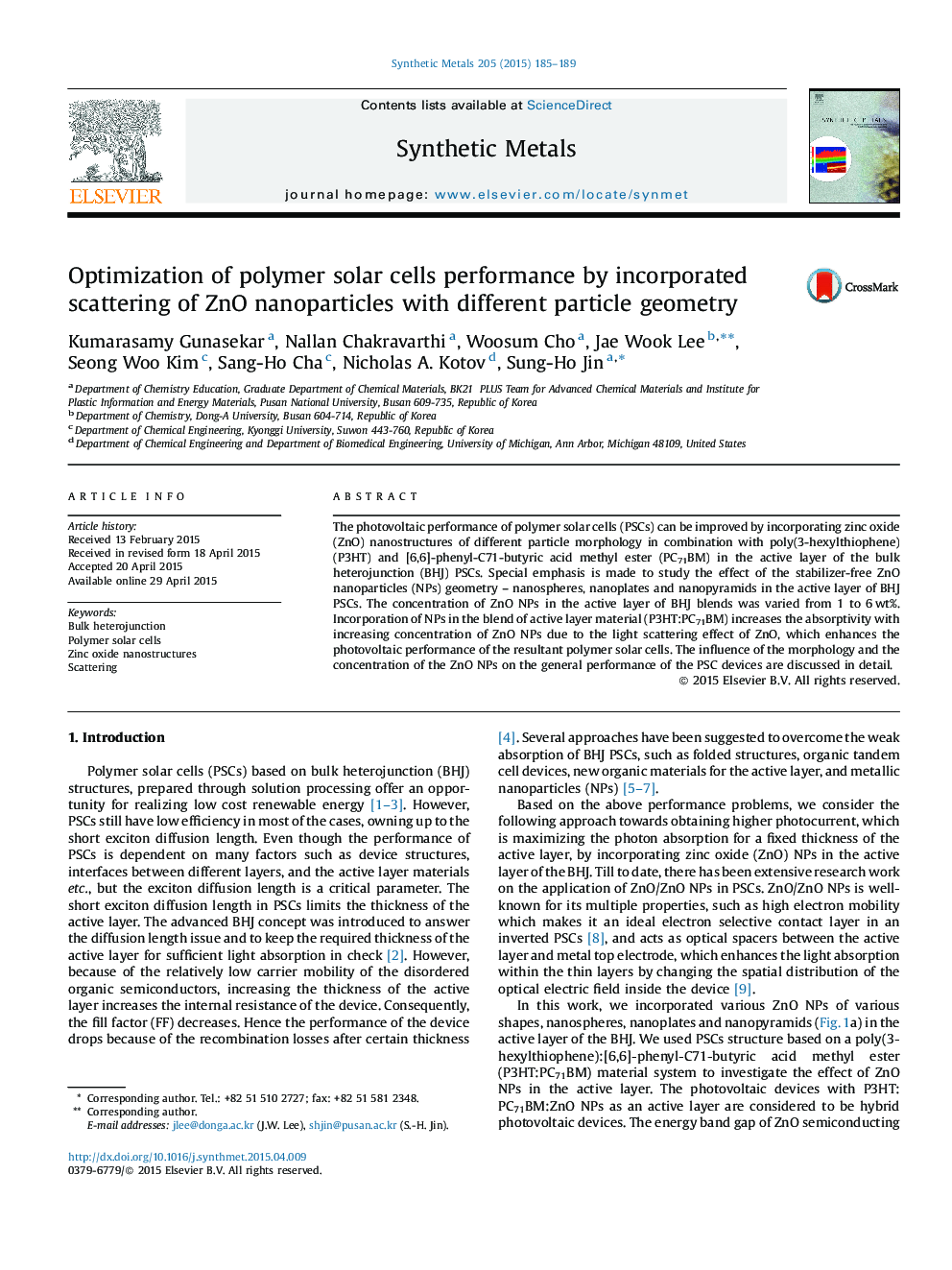| Article ID | Journal | Published Year | Pages | File Type |
|---|---|---|---|---|
| 1440416 | Synthetic Metals | 2015 | 5 Pages |
•The effect of stabilizer-free ZnO nanoparticles geometry in active layer of organic solar cells was studied.•The device using non-spherical ZnO nanoparticles has a better efficiency due to scattering effect.•The device with ZnO nanoplates in the active layer showed 4.8% enhancement in efficiency.•The scattering effects of ZnO nanoparticles were studied using discrete dipole approximation method.
The photovoltaic performance of polymer solar cells (PSCs) can be improved by incorporating zinc oxide (ZnO) nanostructures of different particle morphology in combination with poly(3-hexylthiophene) (P3HT) and [6,6]-phenyl-C71-butyric acid methyl ester (PC71BM) in the active layer of the bulk heterojunction (BHJ) PSCs. Special emphasis is made to study the effect of the stabilizer-free ZnO nanoparticles (NPs) geometry – nanospheres, nanoplates and nanopyramids in the active layer of BHJ PSCs. The concentration of ZnO NPs in the active layer of BHJ blends was varied from 1 to 6 wt%. Incorporation of NPs in the blend of active layer material (P3HT:PC71BM) increases the absorptivity with increasing concentration of ZnO NPs due to the light scattering effect of ZnO, which enhances the photovoltaic performance of the resultant polymer solar cells. The influence of the morphology and the concentration of the ZnO NPs on the general performance of the PSC devices are discussed in detail.
Graphical abstractFigure optionsDownload full-size imageDownload as PowerPoint slide
